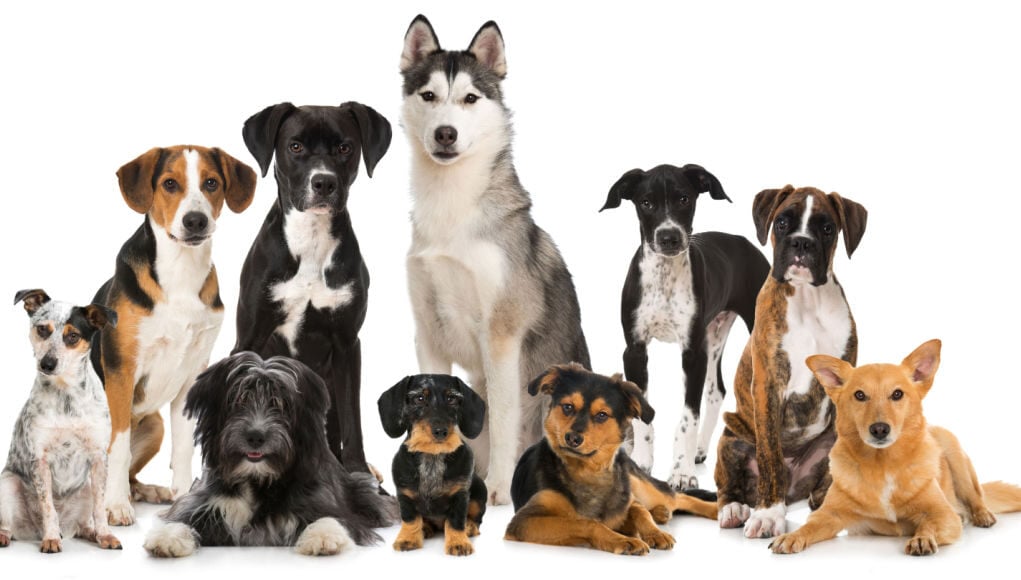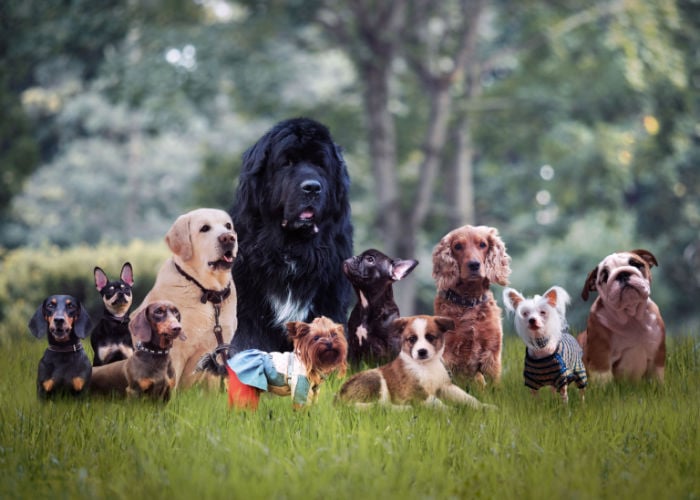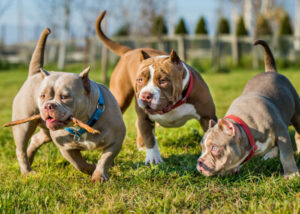Table of Contents
THERE ARE SEVERAL DOG BREED GROUPS that different kennel club groups recognize.
Depending on the region or country, every kennel club group has its own set of standards and ways of classification.
And while it's difficult (and time-consuming!) to go through each one of them, we can go ahead and focus on the seven major dog breed classes.
Let this article be your ultimate guide on the dog breed groups—their history, core traits, and the popular breeds that fall under each category.
Dog Breed Groups Explained
Historically speaking, dogs have been bred to perform various tasks. Sure, they're adorable, but they gotta serve some purpose too, you know?
Some were bred to do labor while others were for sporting activities. Farm dogs have been helpful in herding flocks, while some lapdogs have been mostly revered as sacred or royal animals in some cultures.
Currently, there are more or less 200 dog breeds that the American Kennel Club recognizes (yes, it's a lot!)
And depending on their “jobs” or what they were originally raised for, most dog breeds fall under the 7 dog breed groups: Working, Herding, Hound, Sporting, Non-sporting, Toy, and Terrier dogs.
If you think about it, it's almost the same as asking what a person's work, job, or profession is. It helps you understand why they do what they do!
When AKC first started in 1884, it only categorized dog breeds as Sporting or Non-sporting.
But as the canine population grew over time and new breeds popped under its radar, AKC eventually added Working, Terrier, and Toy groups in 1924. Herding dogs weren't included until after 1983.
And while dogs have their own individual quirks, categorizing them into each group can give us a good idea of their personality and what their needs are so we can keep them happy.
The 7 Major Dog Breed Groups
1. Working Dog Breed Group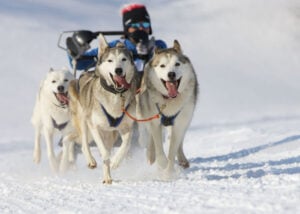
Ever heard of the phrase, “Work like a dog” or “It's a dog's life?”
They mean always going the extra mile and working extremely hard.
And when you see a Working dog at work, you'll surely understand why.
Most dogs in the Working group are either bred or evolved to excel in performing practical tasks like pulling carts or sleds, hauling heavy loads on farms, guarding the house, rescue operations, guide and service dogs, and so much more.
You can even say they're the blue-collar workers among the canine population!
History of Working Dogs
Working dogs have always been valued as companions and co-workers since time immemorial.
Nordic culture documents the existence of working dogs among ancient Vikings. Some were even buried with their masters to serve as guards and guides on their journey to the Underworld.
During World War I, working dogs called “Mercy dogs” also played a vital role as paramedics on the battlefield. They were equipped with medical supplies and would seek out wounded soldiers to assist them.
World War II also had a fair share of helpful working dogs in the form of wartime sniffers. They'd sniff enemy camps with high efficiency and minimal detection.
No doubt that these furry hard workers are the jacks of all trades!
Core Traits of Working Dogs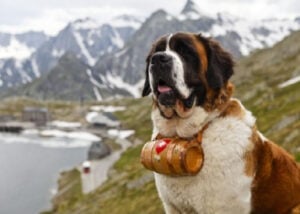
Because they mostly do heavy work, working dogs are generally large in size.
Their impressive stature and strength are what make them effective workers.
Working dogs are also loyal and highly intelligent.
They are independent, protective, and strong-willed, yet pretty sweet and caring to their masters.
These large breeds don't only have an intimidating stance, but they also have the energy to match it!
With an active mind and body, plus double coats that generally shed a lot for some, working dogs can surely keep their owners busy with physical activities and grooming.
Because of this, these breeds are usually much more suitable for seasoned dog owners instead of newbies.
Working Dog Breeds
Some of the popular working dog breeds are:
- Alaskan Malamute
- Siberian Husky
- Great Dane
- Doberman Pinscher
- Rottweilers
- Saint Bernards
- Mastiffs
- Samoyed
- Bernese Mountain Dog
ALSO READ: Working Dog Breeds: 10 Best Hardworking Canines
2. Herding Dog Breed Group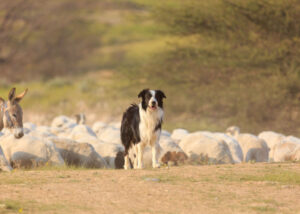
The most intelligent dog breeds are often found in the Herding group.
As the name suggests, herding dogs were originally bred to gather, herd, and protect livestock, including sheep, cattle, and even reindeer.
They sure can be bossy around other animals, and that's what makes them special!
Herding dogs like to work closely with their humans, relying on hand signals and/or spoken commands to perform their duties.
Just like working dogs, herding breeds are also effective for police work and other practical tasks. Just give them something worthwhile to do, or else they can be quite a handful!
And if you haven't seen how mesmerizing a herding dog is in action, check out this video below.
History of Herding Dogs
With the development of cattle breeding about 6,000 years ago comes the breeding of herding dogs.
Dogs that once assisted humans in hunting also learned to assist in livestock maintenance. Their natural predatory instinct of chasing prey has been modified and evolved into a herding instinct under the direction of humans.
Dogs under this breed group were once recognized as Working dogs until AKC added the Herding classification in 1983.
Core Traits of Herding Dogs
Their main task requires herding dogs to be agile and quick on their feet. They are often medium in size, as managing livestock requires them to be mobile and capable of short-burst energy.
But herding dogs are not just energetic; they're also smart and intuitive. It's as if they can read their master's mind even before they're given the command.
This exceptional intelligence and natural responsiveness make them highly trainable.
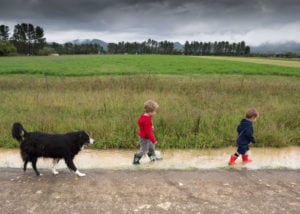 And even if they're not working on a farm, herding dogs still got that innate ability to corral moving animals. They may even try to herd other pets or small children!
And even if they're not working on a farm, herding dogs still got that innate ability to corral moving animals. They may even try to herd other pets or small children!
A word of advice for interested dog owners, though: you also gotta keep them busy with any form of work, training, and lots of exercises and mental stimulation.
Herding Dog Breeds
Some of the popular Herding dog breeds are:
- Australian Cattle Dogs
- Australian Shepherds
- Border Collies
- Shetland Sheepdogs
- Belgian Malinois
- German Shepherds
ALSO READ: 31 Herding Dog Breeds
3. Hound Dog Breed Group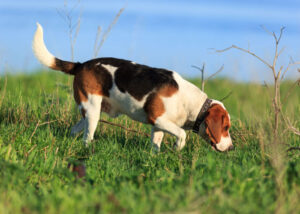
Dogs that belong to the hound group are exceptional hunters.
They have been specifically bred to pursue warm-blooded prey like raccoons, rabbits, and antelopes.
Depending on their characteristics, hound dogs are further categorized into Sighthounds and Scenthounds.
These dogs rely on their exceptional sense of sight and smell, making them ideal for law enforcement work.
History of Hound Dogs
The earliest sighthounds had been documented since the time of the Ancient Egyptians and Celts between 4,000 to 6,000 BC.
Egyptians value their hounds so much that some are even mummified and buried with their owners. It's also common for the tombs of upper men to be designed with the likeness of a hound dog.
In fact, the personification of Anubis, the Egyptian god of the dead, is something between a jackal and a hound.
Because of its historical significance and popularity, the Hound dog breed group became part of AKC's classification in 1885.
Core Traits of Hound Dogs
There's no doubt that hound dogs have the most powerful senses among other breeds.
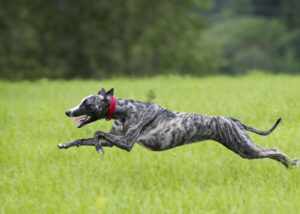 Apart from their sharp eyes, sighthounds are also known for their speed.
Apart from their sharp eyes, sighthounds are also known for their speed.
They're able to keep their prey in sight, which makes them helpful in assisting hunters in catching foxes, hares, deer, and elk.
Scenthounds, on the other hand, may not be the fastest, but they sure have the patience and endurance to track prey by their scent.
Personality-wise, hound dogs can be affectionate and strong-willed. Some breeds may need training more than others.
Still, always make sure to keep them in a fenced space, or else they may wander off trying to follow an interesting scent!
Hound Dog Breeds
Some of the popular Hound dogs are:
- Basset Hound
- Beagle
- Bloodhound
- Dachshund
- Greyhound
- Afghan Hound
- Basenji
ALSO READ: 11 Popular Hound Dog Breeds
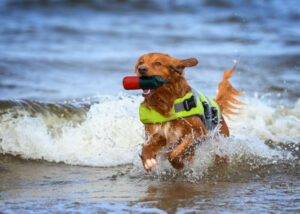 4. Sporting Dog Breed Group
4. Sporting Dog Breed Group
The sporting group features a pretty diverse breed of dogs.
They were, after all, one of the two earliest dog breed groups recognized by the AKC.
Generally speaking, these dogs share a love for the outdoors. They are also a hunter's best friend.
Sporting dogs were originally bred to assist hunters in capturing and retrieving feathered games such as fowls, pheasants, and others.
There are four types of Sporting dogs: Spaniels, Pointers, Retrievers, and Setters—all with their own special set of skills.
Retrievers, for example, are good swimmers. They can catch waterfowl like ducks and retrieve dead and wounded game in the water.
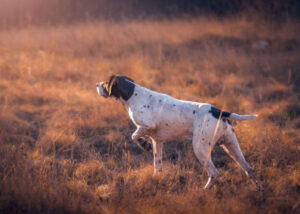 Pointers and Setters are called such because they know how to “point” and “set” where the quarry is.
Pointers and Setters are called such because they know how to “point” and “set” where the quarry is.
Pointers do this by striking a distinctive pose—one paw raised with their snout pointed in the game's direction.
Setters crouch near the game, marking where the hunter can throw his net over both the bird and the dog.
Spaniels, on the other hand, actively find the hunted birds to frighten them into flying, allowing the hunter to take aim and fire.
History of Sporting Dogs
Spaniels were the first dogs to be recognized as useful in assisting humans in hunting as early as the 14th century.
In fact, breeds weren't as big of a deal before as it is now. Any dog that can do what Spaniels do during hunting was also called such, regardless of their appearance.
Although Pointers and Setters have already been existing around the same time as Spaniels, they didn't become popular until after the Middle Ages when their instinctive skills had been fully developed.
As people tried to breed the perfect hunting dog companion further, a combination of Setter, Spaniel, and Newfoundland yielded the first Labradors, Flatcoats, and Curlies around 1850.
Core Traits of Sporting Dogs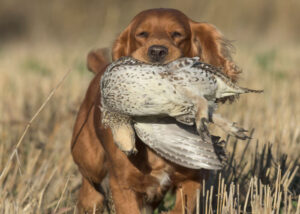
Sporting dogs are used to different terrains and conditions.
They mostly have thick, water-repellant coats that are resistant to harsh conditions.
Dogs in this breed group are also very much active and have alert personalities.
They make for affectionate and well-rounded pets, thanks to their even temperaments.
Active families who love the outdoors and physical activities will surely enjoy the company of these energetic furry fellas.
Sporting Dog Breeds
Some of the popular Sporting dog breeds are:
- English Cocker Spaniel
- Labrador Retriever
- English Springer Spaniel
- German Shorthaired Pointer
- Weimaraner
- Golden Retriever
- English Setter
RELATED: The Ultimate Guide to Hunting Dog Training
5. Non-Sporting Dog Breed Group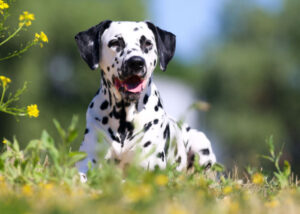
The Non-sporting group breed is more of a general classification.
There's actually not much similarity among dogs in this group except for their four legs and paws and wet noses.
They don't have a single purpose and aren't sized the same as the dogs from the other groups.
Breeds that don't quite fit the bill of other groups are mostly in the Non-sporting category.
But don't get it wrong. That doesn't make them less awesome and adoring than the others!
There are definitely lots of reasons why these dogs are the perfect candidate for every family's furry companions.
History of Non-Sporting Dogs
Being two of the original classification that AKC established from its inception (along with the Sporting group), the Non-sporting group became the catch-all for dogs that don't have a specific function.
Or at least, not anymore. Some dogs in this group initially had their own function, historically speaking, but have now been irrelevant or outdated.
The Chinese Shar-Pei, for example, was originally bred to become fighting dogs. Of course, these days, they don't do much fighting anymore.
Other Non-sporting dogs were also bred before as specialty pets for the nobility and the royalty in different cultures.
The Tibetan Terrier, or the “Holy Dog of Tibet,” was once considered a sentinel of the Buddhist monasteries in Tibet.
They were believed to be a bearer of good luck to travelers, especially when gifted.
These two breeds and most other Non-sporting dogs now function mostly as companion dogs.
Core Traits of Non-Sporting Dogs
It's also difficult to pinpoint the exact core traits. Non-sporting dogs are really different from one another.
However, one thing is certain: they're fiercely loyal, adaptable, and the best addition to the family everyone could ask for.
Each dog also has its own fascinating history, traits, and characteristics that make them adorably unique and interesting.
Non-Sporting Dog Breeds
Popular breeds that belong to the Non-sporting group are:
- Dalmatian
- Chow Chow
- Shar Pei
- American Bulldog
- Poodle
- Lhasa Apso
- Shiba Inu
- French Bulldog
- Schipperke
- American Eskimo Dog
ALSO RELATED: 10 Best Dogs for Seniors and How They Benefit the Elderly
6. Toy Dog Breed Group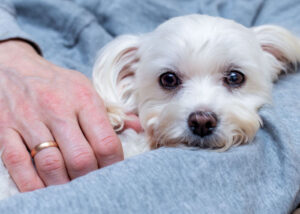
While other breeds share similar capabilities or functions, the Toy group only relies on a dog's cute size. They make the perfect lap dogs!
They're like a bite-size Snickers bar or a Red Bull sampler pack.
Still, this doesn't mean you should underestimate them because they sure do pack a punch.
Toy dogs may be small in build but compensate with their big brains and even bigger personalities.
History of Toy Dogs
The origins of Toy dogs are also varied. Some were historically bred as lapdogs for the royalties, like the Cavalier King Charles Spaniel, Pomeranian, and Papillion.
Others were bred as smaller size of terriers or other larger breeds like the Mini Pinscher, Yorkshire Terrier, and Italian Greyhound.
Because humans have this natural bond with dogs, our ancestors from 12,000 years ago already wanted smaller breed pups to keep as compact companions that they could carry anywhere.
There are existing pieces of evidence that the origin of smaller dogs can be traced back to the Arabian wolf, which is much smaller than the Great Dane-sized canines before their domestication.
Core Traits of Toy Dogs
They're small. No doubt about this. But apart from their size, Toy dogs can also be clingy and affectionate. They'd love to be near you all the time.
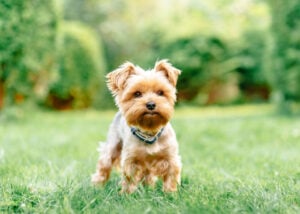 The thing is, they can get separation anxiety that fast. They often don't do well being left by themselves!
The thing is, they can get separation anxiety that fast. They often don't do well being left by themselves!
Couch potato owners also swear by owning these breeds as Toy dogs don't require much exercise.
It's important to train them early on, though, because they tend to be strong-willed. Sometimes, they also get to be selective with who they befriend, so early socialization is key for dogs in this breed group.
Toy Dog Breeds
Some of the popular Toy dog breeds are:
- Chihuahua
- Pomeranian
- Maltese
- Cavalier King Charles Spaniel
- Yorkshire Terrier
- Pekingese
- Shih Tzu
- Miniature Pinscher
- Pug
ALSO READ: 20 World’s Best Toy Dog Breeds
7. Terrier Dog Breed Group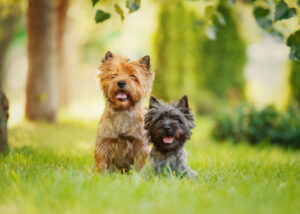
Dogs in the Terrier group were originally meant to be vermin hunters.
They also vary in size and stature, but all are meant to serve their purpose–hunt rodents and vermins.
Smaller terriers are meant to burrow after these creatures while the larger ones are meant to dig them out.
Some terriers, though, were cruelly bred for fighting and bull-baiting, like Bull Terriers. Now, these dogs are the sweetest companions for some dog owners.
Terrier dogs also make for the best watchdogs. They're always on high alert and love hearing the sound of their own voice!
History of Terrier Dogs
The name Terrier is derived from the word “terra,” which means ground or earth. Dogs in this breed group are meant to be on the ground to hunt.
They were originally bred to help in barns and stables. Their main role is to get rid of unwanted pests like vermin and rodents and be generally useful around.
But some terriers were also made to compete in events like clearing a pit full of rats or, worst, pit fighting.
In the 18th century, some terrier dogs were crossed with hound dogs to improve their hunting skills, while others were bred with fighting dogs to increase their tenacity.
The American Kennel Club recognized this dog breed group in 1924.
These days, terriers are favored by active people living in urban settings because of their size and energetic demeanor.
Core Traits of Terrier Dogs
Terrier dogs are highly determined. Once they lock in on potential prey, they'd likely chase after it, come what may.
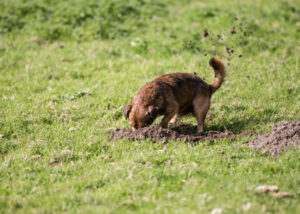 They're also the best bunch to guard the house and alert you from unwanted strangers.
They're also the best bunch to guard the house and alert you from unwanted strangers.
However, they also tend to be feisty and have an independent streak. They bark a lot and tend to be destructive when bored.
Although it's not the easiest to train terriers, they need lots of exercise and enrichment activities to keep them from digging and other unwanted behaviors.
Terrier Dog Breeds
The most popular Terrier dog breeds are:
- American Staffordshire Terrier
- Jack Russell Terrier
- Bull Terrier
- Fox Terrier
- Australian Terrier
- Staffordshire Bull Terrier
- Rat Terrier
- Scottish Terrier
Dog Breed Groups: Final Thoughts
Dog breed groups are important to understand because it helps us dog owners understand what makes our furry friends tick.
It can also help potential new owners choose which breed would best suit their own lifestyle—whether they prefer adorable toy dogs, active and athletic sporting dogs, or well-rounded working dogs.
Do yourself a favor and the next time you watch sporting events or see a new dog in the park, try to guess the dog breed groups they belong in.
You'll be surprised at what new information you can learn about the men's best friend every single day!


